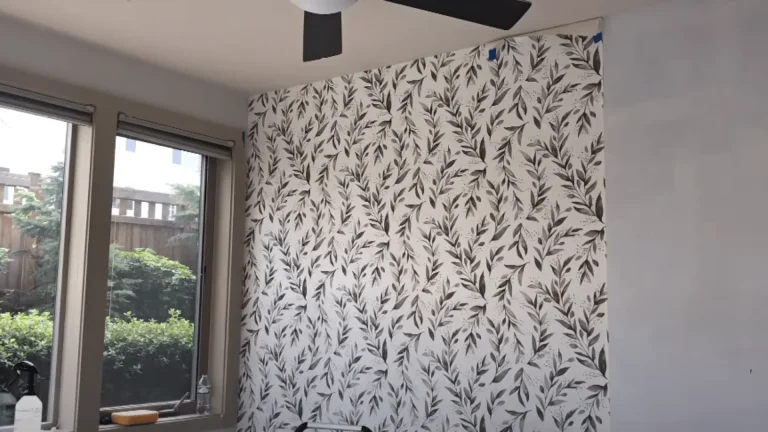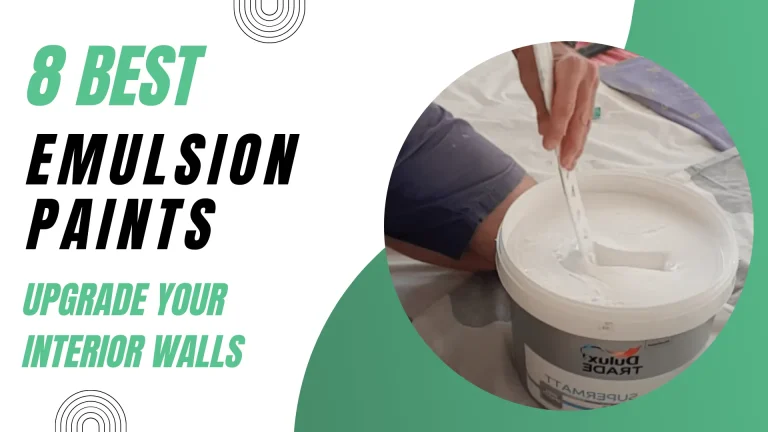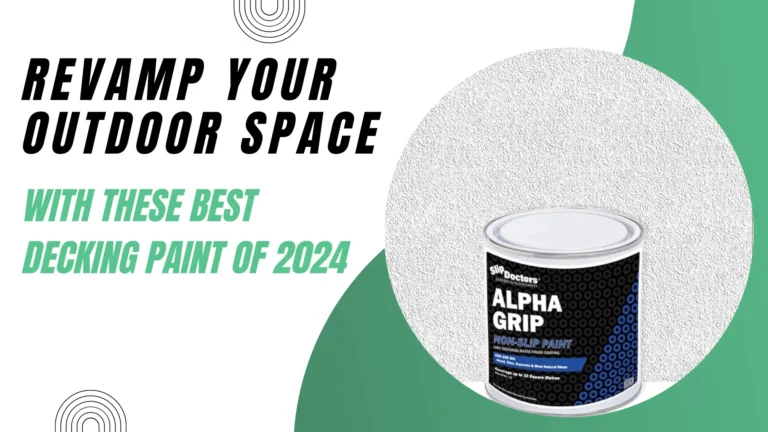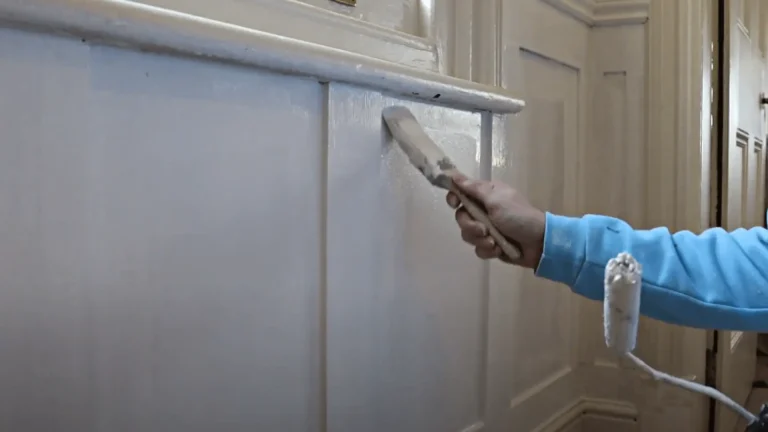Learn How To Paint A Radiator For A Smooth Finish. – Step-By-Step Guide

DIY DOJO is reader-supported. We may earn an affiliate commission when you buy through links on our site. Find out more.
If you’re wondering how to paint a radiator, it’s worth considering that this simple task can quickly give your room a much-needed update. Although it may not seem like a priority, neglecting to spruce up your radiator can leave it looking drab and unappealing, while a fresh coat of paint can transform it into a standout feature of your living space.
To most people, painting a radiator would seem like an impossible or strange task, so I thought I’d put together a step-by-step guide to painting radiators. This blog will take you through the steps that are needed to successfully paint your radiator. I hope this helps anyone trying to paint their radiators, and I hope you enjoy the read! Let’s begin.
How to paint my radiator without removing it?
Painting a radiator without removing it is a cost-effective way to do a paint job. Also, you don’t need many tools to paint it. If your radiator has both inlets or outlets, then you must keep the radiator where it is and paint it while attached to the walls. Let’s find out how to paint a radiator without removing it.
Turn the radiator off:
First thing first, what you’ll need to do is turn the radiator off. You can turn it off using its valves.
Undo the vertical nut:
Next what you should do is undo the vertical nuts. This nut is located between the valve and radiator inlet, and losing it will help you to rotate the inlets.
Move the radiator:
Now you have to loosen the nuts, then move the radiator forward, and you don’t have to remove it from the wall. By doing this, you are saving yourself from more work.
Paint the radiator:
Now you have moved the radiator forward by losing its nuts. It’s your time to paint the surface of the radiator and the wall. This will help you to easily reach the places behind the radiator.
If you’re planning to paint your radiator and your walls, use our Wall Paint Calculator to ensure you’re getting the most out of your paint budget.
A Step-by-step guide to painting a radiator:
Painting radiators can be tough to do and requires a lot of time and focus. However, it’s worth the effort. Painting radiators can be used to stop them from leaking or rusting and also to transform them into a new radiators. Below we’ll show you how to improve the look of your radiator and make it rust-free. Without further delay, let’s uncover steps to make your room look refreshed.
Cool the radiator off:
You can’t paint the radiator while it’s on. So first, turn your radiator off and let the radiator cool. If you paint on the warm radiator, then the paint will not stick to it, and it will create a mess. So turn it off and wait for its cooling.
Cover your floor:
Cover the floor around the radiator with a piece of cloth or any masking tape. Just in case, while painting, if the paint drips off, then it’ll not harm the floor.
Do the cleaning:
Before painting anything, it is advisable to clean your radiator. This will ensure a flawless finish and will not create bumps on it. So with that in mind, clean the radiator with detergent or any kind of scrub.
Sand the radiator:
If your radiator is old and you want to paint it, then it’s better to sand the old paint. Sometimes painting on the old paint will not let the new paint stick to it also, sometimes, it causes bumps. So sand it, and it can be done with sandpaper.
Prime the radiator:
To ensure strong adhesion between the surface and the paint, you must use a primer. And use a water-based or a special radiator primer for the radiator as it will not turn yellow over time. Prime it and let it dry.
Paint the radiator:
Once the primer is dried, your radiator is prepared and ready. Now you can go for the final steps once you finish all the above steps. Start painting the surface of your radiator. If necessary, apply another coat of paint. Make sure to use the right paint and paint brush for the radiator to get a professional look. Do not rush and leave the paint to dry.
To achieve a smooth and even finish, it’s important to paint in the same direction throughout the process. This will prevent the paint from streaking or appearing uneven, ensuring a professional-looking result. So take your time, be patient, and remember to paint in the same direction for the best outcome.
If you’ve ever wondered whether it’s possible to paint matt over silk paint, check out our expert advice from DIY DOJO.
Things to consider when painting the radiators:
Below are a few of the things that you must consider if you are thinking of painting your radiator. Let’s uncover what they are:
- When it comes to painting, Stir the paint well before use.
- Use top-notch paint for the radiator. If you don’t, the paint may not stick to the radiator and flake off.
- For best results, make sure that you allow your paint to thoroughly dry before you place water again in the radiator.
- Make sure to protect surrounding areas when you paint the side of the radiator. You can place drop cloths over the radiator outlets and any adjacent wall with open outlets you don’t want to be colored.
- When painting radiator pipes, use a quality primer. The primer coats the entire radiator properly and helps the paint stick better.
If you’re looking for a way to transform your room without picking up a paintbrush, check out our beginner’s guide on how to wallpaper a wall for a stylish and unique finish.
Is painting a radiator a good idea?
When you want to make your place look classy, you can usually do so by replacing your whole radiator with a new one. It’s a lot cheaper, easier, and faster than you would think! However, there is one question that you should ask yourself. Is it a good idea to paint your radiator? Ask an expert to be sure. Certain radiators shouldn’t be painted.
While radiator painting is certainly doable, you should use the best paint that is specifically made for that purpose. Don’t just trust any paint! While it might be tempting to use the leftover paint that was previously used on the walls, remember that paint has a different texture and consistency when it dries.
There’s a good chance that the paint is too thick and won’t stick to the radiator. Not to mention that you aren’t allowed to paint radiators. They have a special coating that prevents rust! So, to be safe, just talk to an expert.
If you accidentally spill paint on your carpet during a painting project, don’t worry, our comprehensive guide on “How To Get Paint Out Of Carpet” can help you remove the stains effectively and leave your carpet looking brand new.
Conclusion:
Thank you for reading this blog on how to paint a radiator. I hope that the above guide helped you learn how to paint your radiator without any problems. By painting your radiator, you will be able to add a unique and stylish touch to your interior design and create an amazing focal point in your room. If you are ready to start painting your radiator, I would love for you to share your experience with us. I hope you will enjoy this DIY project, and I am looking forward to reading about your experience.
If you’re wondering whether you can use emulsion paint to paint your radiator, you may find our article on painting radiators with emulsion helpful.
FAQS:
If you’re considering using Farrow and Ball paint for your next project, check out our article to find out whether it’s worth the extra cost.







Your article helped me a lot, is there any more related content? Thanks!